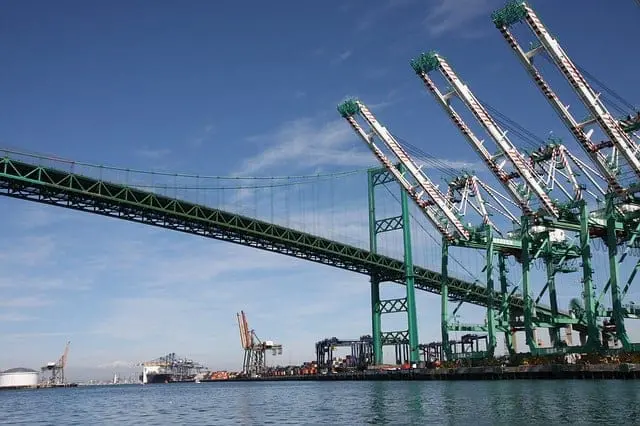We’ve spent a lot of this month looking at the importance of location in fulfillment.
From alternative ways to leverage location in a digital world to the physical reality of bringing ever-larger vessels through the Panama Canal, it’s clear that where we are and the routes we choose to move cargo through have a direct impact on product availability and customer satisfaction.
Another aspect that cannot be overlooked, but which none of us can fully control, is the ability of the port operators to get goods off ships and onto domestic transport routes.
It’s a challenge that has been the subject of much discussion recently and one that we’ll review as we close out another busy month.

A Tale of Two Cities
Or two competing coastlines, more accurately, as America’s primary ports on the East and West coasts continue to jockey for position.
In California, the Port of Los Angeles/Long Beach is going to great lengths to ensure the port congestion experienced last year is a thing of the past. Almost 20 percent of the port’s billion dollar budget for 2015/16 is dedicated to infrastructure improvements, including its first fully automated container terminal and the development of transport links in and out of key facilities.

The port’s strategic plan reveals that capacity and efficiency improvements rank highly on its list of priorities, taking the first two places in a four-point plan for the future:
- Build a world-class infrastructure for West Coast importers,
- Ensure efficient, secure, and sustainable supply chain operations,
- Improve the financial performance of port assets,
- Develop strong stakeholder relationships with all port users.
If average truck visit times are anything to go by, things are going to plan.
Across 13 container terminals active at Los Angeles-Long Beach, the average visit fell by a full seven minutes in just one month, from 85 mins in April to 78 minutes in May. Closer coordination between trucking companies and terminal ops have been credited with the increased efficiency, with the aforementioned improvements expected to increase the effect further still.
On the East Coast, the Port of New York and New Jersey has not been hit with the same congestion issues as Los Angeles, but its aging infrastructure faces challenges that demand similar prioritization.
As we emphasized with our example of the Bayonne Bridge development last week, improvements are overdue and, in some cases, behind schedule. In the short term, there is some flexibility to adjust operations across the existing infrastructure, but eventually a complete overhaul and increased automation will be required. Acknowledging this challenge, the Port Authority of NY/NJ has confirmed improvements to the tune of $4 billion, many of which are already underway.
The same crucial terms appear throughout the port authority’s redevelopment program description: efficiency, sustainability, and productivity. If the country’s ports are to keep pace not only with each other but competitors around the world, these are the qualities that must be developed and emphasized to operators on a daily basis.

A Bicoastal Focus
With operations on both sides of the country, Capacity has a keen interest in seeing both ports develop. We have facilities in Los Angeles and New Jersey that are intrinsically linked to the abilities of these two major shipping locations.
A flexible fulfillment strategy requires multiple points of entry into the country, along with reliable transportation solutions and delivery partners who can make good on the “final mile.” We find that the option to bring cargo in via either coast provides greater flexibility for our clients and more options for our fulfillment team when challenges arise.
Despite the slowdown in container shipping, this is an exciting time for anyone working in the supply chain. There are many moving parts and e-commerce seems to be pushing them all to speed up operations, online and off.
Location continues to play a key role in providing a seamless ordering experience for customers, while newer influences like website design and mobile shopping add even more factors for retailers to incorporate.
The best way to stay on top of these trends is to keep a close eye on the industry and develop relationships with service providers in a position to make the most of them.
